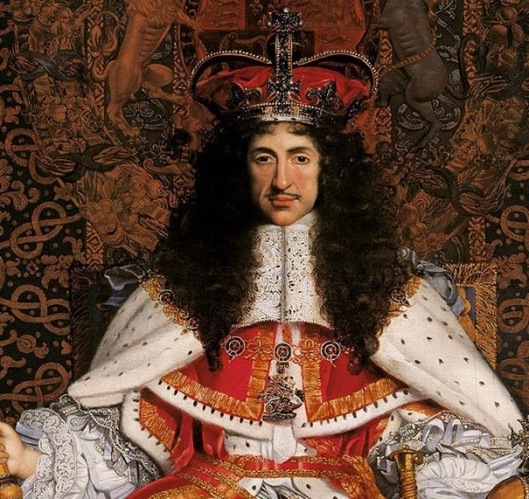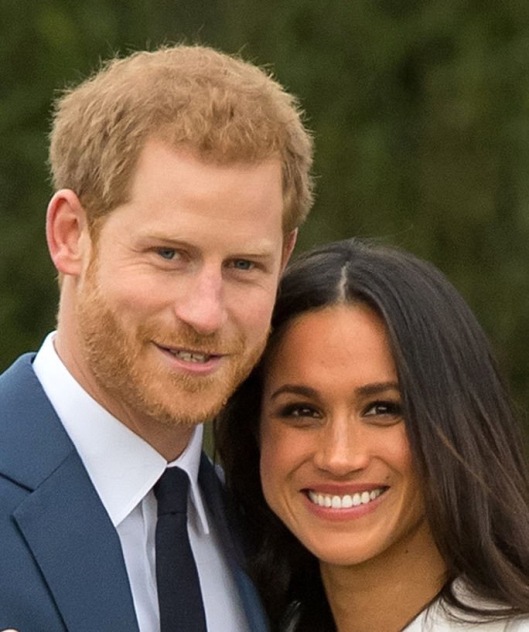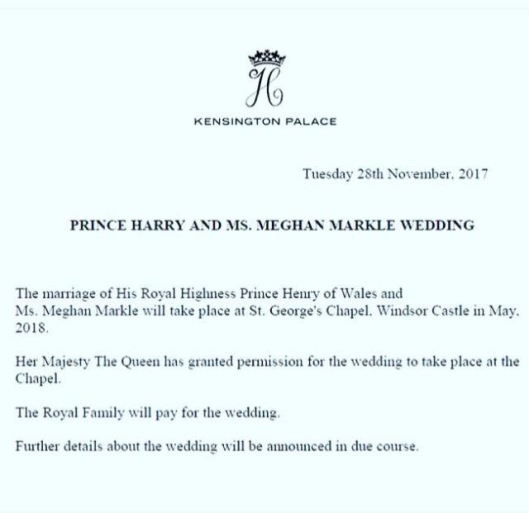As we have seen so far in the life of James I of Scotland many of his troubles were the result of internal family squabbles within the House of Stewart. These family dynamics would also lead to his downfall. We’ll begin by examining Walter Stewart, the youngest son of Robert II. Walter was the only one not to have been provided with an earldom during his father’s lifetime. Walter became ward of his niece Euphemia, daughter of his deceased brother, David, earl of Strathearn and Caithness. After the death of David, Earl of Strathearn in March of 1389, Euphemia became countess of Strathearn in her own right and Walter, administered Strathearn for her for the next decade and a half.
Assisting Walter in the administration of Strathearn was his brother Robert, Earl of Fife and Guardian of Scotland. Walter again supported Robert (now Duke of Albany) against their nephew, David, Duke of Rothesay in 1402.
The Duke Albany most likely arranged the marriage of Euphemia to one of his friends , Patrick Graham and by doing this removed Walter’s involvement in the administration of Strathearn. Duke Robert, possibly to make up for the loss of the rewards of Strathearn, created Walter earl of Atholl and Lord of Methven. In 1413, Graham was killed in a quarrel with his own principal servant in the earldom, John Drummond.
 Methven Castle. The original castle was the seat of Walter Stewart, Earl of Atholl.
Methven Castle. The original castle was the seat of Walter Stewart, Earl of Atholl.
The Drummond relations were close to the Earl of Atholl and the with the death of Graham it renewed the Earl’s involvement in Strathearn as ward to Graham’s son. The renewal of the Earl’s involvement in Strathearn produced a strong opposition from the Duke Albany and much of this hinted at the Earl of Atholl’s possible involvement in the murder of Graham. There was bad blood now existing between Duke of Albany and the Earl of Atholl. The animosity between the two Scottish Nobles led King James to ally himself with Earl Walter, his uncle, on his return to Scotland in 1424. The Earl of Atholl participated at the assize that sat over the May 24/25 1425 that tried and found the prominent members of the Albany Stewarts guilty of rebellion—their executions followed swiftly.
With the Albany Stewarts out of the way, King James granted the Earl of Atholl the positions of Sheriff of Perth and Justicier and also returned to him the Earldom of Strathearn, confirming Earl Walter’s policing remit given by Albany and his already effective grip on Strathearn. Atholl’s elder son, David, had been one of the hostages sent to England as a condition of James’s release and had died there in 1434—his younger son, Alan died in the king’s service at the Battle of Inverlochy in 1431.
David’s son Robert was now the Earl of Atholl’s heir and both were now in line to the Scottish throne after the young Prince James. James continued to show favour to the Earlmof Atholl and appointed his grandson Robert as his personal chamberlain but by 1437, after a series of setbacks at the hands of James, the Earl and Robert probably viewed the king’s actions as a prelude to further acquisitions at Atholl’s expense.
This weakened Atholl’s hold on the rich earldom of Strathearn and both he and Robert realized that after the Earl’s death Strathearn would revert to the crown. This meant that Robert’s holdings would have been the relatively impoverished earldoms of Caithness and Atholl and amounted to no more than what was in the Earl Walter’s possession in the years between 1406 and 1416.
The alliance with France had virtually ceased after 1428 and after that James adopted a much more non-aligned position with England, France and Burgandy while at the same time opening up diplomatic contacts with Aragon, Austria, Castile, Denmark, Milan, Naples and the Vatican. Generally, Scotto–English relations were relatively amiable for a time and an extension of the truce until 1436 helped the English cause in France and the promises made in 1428 of a Scottish army to help Charles VII. James had to balance his European responses carefully, because England’s key ally, Philippe III, Duke of Burgundy was also in possession of the Low Countries, a major trading partner of Scotland’s at the time, and therefore James’s support for France was muted.
The truce with England expired in May 1436 but James’s perception of the Anglo-French conflict changed following a realignment of the combatants. The breakdown of the talks between England and France in 1435 precipitated an alliance between Burgundy and France and a request from France for Scottish involvement in the war and for the fulfilment of the promised marriage of Princess Margaret, the eldest daughter of King James to the Dauphin (future Louis XI of France). In the spring of 1436 Princess Margaret sailed to France and in August Scotland entered the war against England with James leading a large army to lay siege to the English enclave of Roxburgh Castle.
James appointed his young and inexperienced cousin Robert Stewart of Atholl as the constable of the host ahead of the experienced march wardens, the earls of Douglas and Angus. Both earls possessed considerable local interests and that the effects of such a large army living off the land may have created considerable resentment and hostility in the area. When the militant prelates of York and Durham together with the Earl of Northumberland took their forces into the marches to relieve the fortress, the Scots swiftly retreated – a chronicle written a year later said that the Scots ‘had fled wretchedly and ignominiously’ – but what is certain is that the effects and the manner of the defeat and the loss of their expensive artillery was a major reversal for James both in terms of foreign policy and internal authority.
The retreat from Roxburgh exposed the king to questions regarding his control over his subjects, his military competence and his diplomatic abilities yet he remained determined to continue with the war against England. Just two months after the failure at Roxburgh, James called a general council in October 1436 to finance further hostilities through more taxation. The estates firmly resisted this and their opposition was articulated by their speaker Sir Robert Graham, a former Albany attendant but now a servant of Atholl. The council then witnessed an unsuccessful attempt by Graham to arrest the king resulting in the knight’s imprisonment followed by banishment but James did not see Graham’s actions as part of any extended threa. In January 1437, Atholl received yet another rebuff in his own heartlands when James overturned the chapter of Dunkeld Cathedral whose nominee was replaced by the king’s nephew and firm supporter, James Kennedy.
Conspiracy and regicide
The reaction against the king at the general council had shown Atholl that not only was James on the back-foot but his political standing had received a huge setback, and may have convinced the earl that James’s killing was now a viable course of action Atholl had seen how assertive action by two of his brothers at different times had allowed them to take control of the kingdom and that as James’s nearest adult relative, the earl must have considered that decisive intervention on his part at this time could prove to be equally successful.
The destruction of the Albany Stewarts in 1425 appears to have played a large part in the conspiracy against the king. Their judicial killing and forfeiture of their lands influenced the servants who administered and depended on these estates for their living. The vacuum left by this was filled by Atholl in whose employment many of these disaffected Albany men appear. These included Sir Robert Graham, who only three months earlier had attempted to arrest the king at the Perth council, and the brothers Christopher and Robert Chambers. Even although Robert Chambers was a member of the Royal household, the old Albany ties were stronger.
A general council was held in Atholl’s heartland in Perth on 4 February 1437 and crucially for the conspirators, the king and queen had remained in the town at their lodgings in the Blackfriars monastery. In the evening of 20 February 1437 the king and queen were in their rooms and separated from most of their servants. Atholl’s grandson and heir Robert Stewart, the king’s chamberlain, allowed his co-conspirators—thought to number about thirty—led by Robert Graham and the Chambers brothers access to the building. James was alerted to the men’s presence, giving the king time to hide in a sewer tunnel but with its exit recently blocked off to prevent tennis balls getting lost, and James was trapped and murdered.
Aftermath
The assassins had achieved their priority in killing the king but the queen, although wounded, had escaped. Importantly, the six-year-old king, now James II, had been safeguarded from Atholl’s control by the removal of the earl’s associate, John Spens, from his role as James’s custodian. Spens vanished from the records following the regicide but the re-allocation of his positions and lands immediately following the murder indicate his part in the plot. Yet, in the chaos following the murder, it appeared that the queen’s attempt to position herself as regent was not guaranteed.
No surviving documentation exists that suggest that there was any general feeling of horror or condemnation aimed at the murderers. It was possible that had the botched attempt at killing the queen succeeded and had Atholl taken control of the young king then his attempted coup might have succeeded. The queen’s small group of loyal supporters that included the Earl of Angus and William Crichton ensured her continued hold of James. This in itself greatly reinforced her situation but Atholl still had followers. By the first week of March neither side seemed to have ascendancy and the Bishop of Urbino, the pope’s envoy, called for the council to pursue a peaceful outcome.
Despite this by the middle of March it is probable that both Angus and Crichton had mobilised to move against Atholl. It is equally likely that Atholl had gathered his forces to resist incursions into his heartlands—on 7 March the queen and the council entreated the burgess’ of Perth to resist the forces of the ‘feloune traitors’.
The position of Atholl and his circle of close supporters only collapsed after Earl Walter’s heir Robert Stewart had been captured and who, in Shirley’s account, confessed to his part in the crime. Walter was taken prisoner by Angus and held at the Edinburgh Tolbooth where he was tried and beheaded on 26 March 1437, the day after the coronation of the young James II. Sir Robert Graham, the leader of the band of assassins was captured by former Atholl allies and was tried at a session of the council sitting at Stirling castle and subsequently executed sometime shortly after 9 April.
Queen Joan’s pursuit of the regency ended probably at the council of June 1437 when Archibald, 5th Earl of Douglas, was appointed to act as lieutenant-general of the kingdom.
King James I’s embalmed heart may have been taken on pilgrimage to the Holy Land following his interment at Perth Charterhouse, as the Exchequer Rolls of Scotland for 1443 note the payment of £90 to cover the costs of a knight of the Order of St John who had returned it to the Charterhouse from the Island of Rhodes.







 .
.

















 ..
..









 One of the biggest speculations concerning the marriage is what Peerage Title the couple will receive. It has become the tradition with Her Majesty, the Queen, to elevate a member of the Royal Family to the Peerage by granting them a title of Nobility on their wedding day. Prince Andrew was created Duke of York at his wedding, Prince Edward was created Earl of Wessex at his wedding, and Prince William was created Duke of Cambridge at his; therefore it is logical to assume Prince Harry will also be granted a Peerage Title on his wedding day.
One of the biggest speculations concerning the marriage is what Peerage Title the couple will receive. It has become the tradition with Her Majesty, the Queen, to elevate a member of the Royal Family to the Peerage by granting them a title of Nobility on their wedding day. Prince Andrew was created Duke of York at his wedding, Prince Edward was created Earl of Wessex at his wedding, and Prince William was created Duke of Cambridge at his; therefore it is logical to assume Prince Harry will also be granted a Peerage Title on his wedding day. 



 Methven Castle. The original castle was the seat of Walter Stewart, Earl of Atholl.
Methven Castle. The original castle was the seat of Walter Stewart, Earl of Atholl.